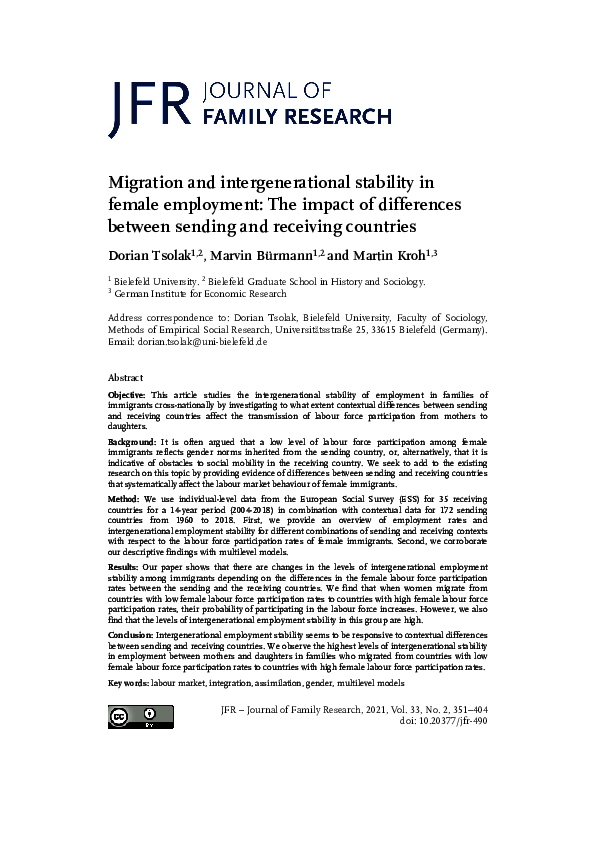Migration and intergenerational stability in female employment: The impact of differences between sending and receiving countries
Abstract

Objective: This article studies the intergenerational stability of employment in families of immigrants cross-nationally by investigating to what extent contextual differences between sending and receiving countries affect the transmission of labour force participation from mothers to daughters. Background: It is often argued that a low level of labour force participation among female immigrants reflects gender norms inherited from the sending country, or, alternatively, that it is indicative of obstacles to social mobility in the receiving country. We seek to add to the existing research on this topic by providing evidence of differences between sending and receiving countries that systematically affect the labour market behaviour of female immigrants. Method: We use individual-level data from the European Social Survey (ESS) for 35 receiving countries for a 14-year period (2004-2018) in combination with contextual data for 172 sending countries from 1960 to 2018. First, we provide an overview of employment rates and intergenerational employment stability for different combinations of sending and receiving contexts with respect to the labour force participation rates of female immigrants. Second, we corroborate our descriptive findings with multilevel models. Results: Our paper shows that there are changes in the levels of intergenerational employment stability among immigrants depending on the differences in the female labour force participation rates between the sending and the receiving countries. We find that when women migrate from countries with low female labour force participation rates to countries with high female labour force participation rates, their probability of participating in the labour force increases. However, we also find that the levels of intergenerational employment stability in this group are high. Conclusion: Intergenerational employment stability seems to be responsive to contextual differences between sending and receiving countries. We observe the highest levels of intergenerational stability in employment between mothers and daughters in families who migrated from countries with low female labour force participation rates to countries with high female labour force participation rates.
Quellen
Tsolak, Dorian, Marvin Bürmann und Martin Kroh. 2021. Migration and intergenerational stability in female employment: The impact of differences between sending and receiving countries. In: Journal of Family Research 33, Nr. 2: 351–404. doi: 10.20377/jfr-490.
